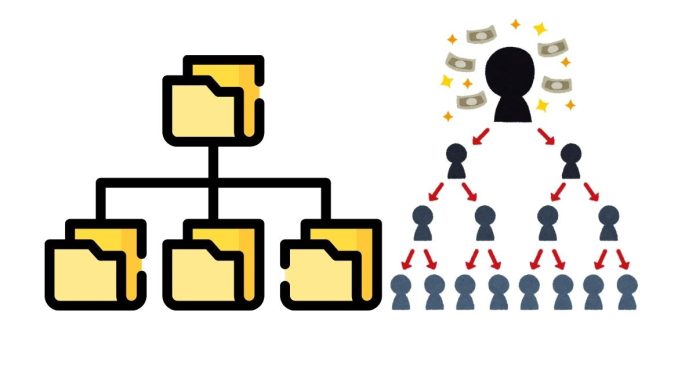The Linux file hierarchy follows a standard directory structure known as the Filesystem Hierarchy Standard (FHS). Here’s an overview of the key directories and what they typically contain:
/(Root Directory)- The top-level directory in the file system. All other directories and files are contained under this root directory.
/bin(Binaries)- Contains essential command binaries (programs) needed for system booting and repairing. These are available for all users.
/boot- Contains boot loader files, including the kernel, initrd (initial RAM disk), and other files needed to boot the system.
/dev(Devices)- Contains device files that represent hardware devices (like
/dev/sdafor storage,/dev/ttyfor terminals).
- Contains device files that represent hardware devices (like
/etc(Configuration Files)- Contains system-wide configuration files for the operating system and installed applications (e.g.,
/etc/passwd,/etc/network/).
- Contains system-wide configuration files for the operating system and installed applications (e.g.,
/home- User-specific directories. Each user typically has a subdirectory here (e.g.,
/home/username) where personal files and configurations are stored.
- User-specific directories. Each user typically has a subdirectory here (e.g.,
/lib(Libraries)- Contains shared libraries and kernel modules needed to boot the system and run programs in
/binand/sbin.
- Contains shared libraries and kernel modules needed to boot the system and run programs in
/media- Mount point for removable media (CDs, DVDs, USB drives, etc.). Devices are typically mounted here when inserted.
/mnt- A directory traditionally used for temporarily mounting file systems, like network shares or other disks.
/opt(Optional Packages)- Contains optional software packages and third-party applications that are installed manually (not through the system’s package manager).
/proc(Process Information)- Virtual filesystem that provides information about running processes, kernel parameters, and system statistics (e.g.,
/proc/cpuinfofor CPU info).
- Virtual filesystem that provides information about running processes, kernel parameters, and system statistics (e.g.,
/root(Root User’s Home)- The home directory for the root (administrator) user.
/run- A temporary filesystem (usually mounted in RAM) that stores runtime data like currently running processes and other system states.
/sbin(System Binaries)- Contains essential system binaries used for system maintenance and troubleshooting, typically by the root user.
/srv(Service Data)- Contains data for services provided by the system, such as web server files or FTP server files (e.g.,
/srv/wwwfor web content).
- Contains data for services provided by the system, such as web server files or FTP server files (e.g.,
/sys(System Information)- Another virtual filesystem that exposes kernel and device information (like
/sys/classfor device classes).
- Another virtual filesystem that exposes kernel and device information (like
/tmp(Temporary Files)- A directory for temporary files created by programs and users. Files here are usually deleted when the system reboots.
/usr(User Data)- Contains read-only user data, including applications and files that are shared among users. The directory is usually large and contains subdirectories like
/usr/bin(user binaries),/usr/lib(libraries), and/usr/share(shared data).
- Contains read-only user data, including applications and files that are shared among users. The directory is usually large and contains subdirectories like
/var(Variable Data)- Contains variable data files like logs, spool files, mail queues, and databases. It’s where dynamic content like system logs (
/var/log) and mail files (/var/mail) are stored.
- Contains variable data files like logs, spool files, mail queues, and databases. It’s where dynamic content like system logs (
This structure is designed to keep things organized and make it easier to manage, especially for system administrators. Would you like more details about any specific directory?


